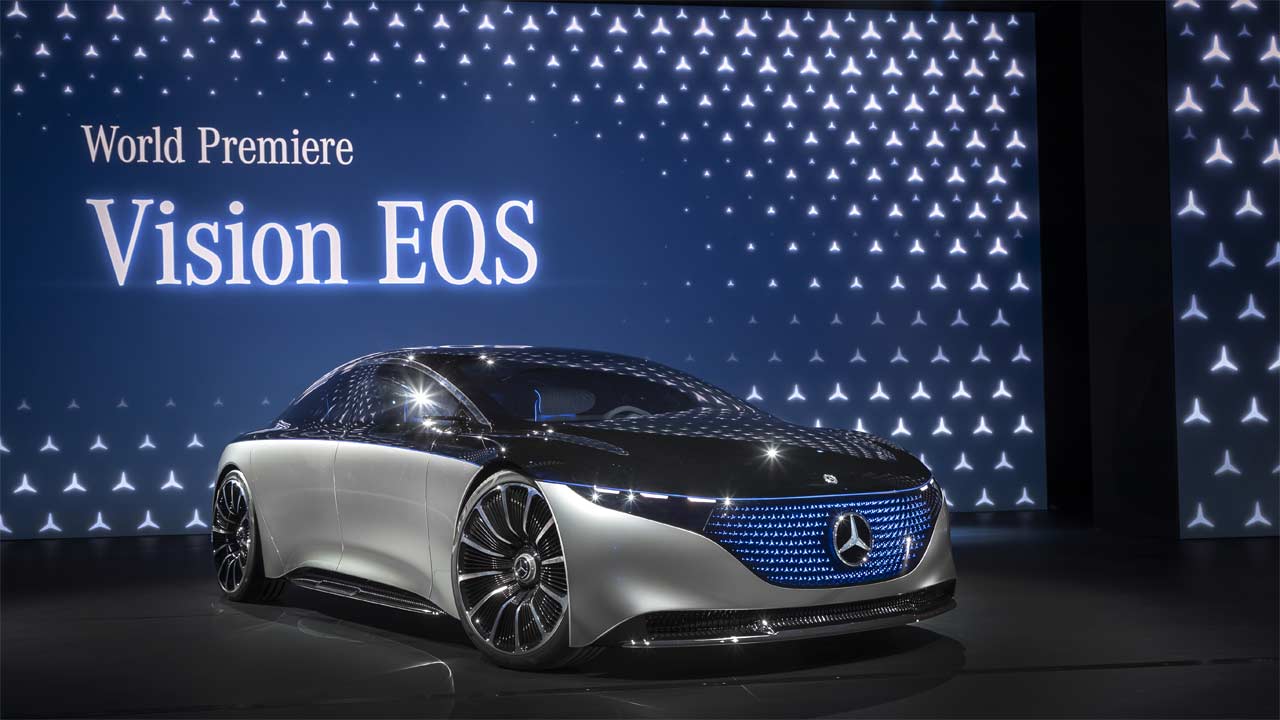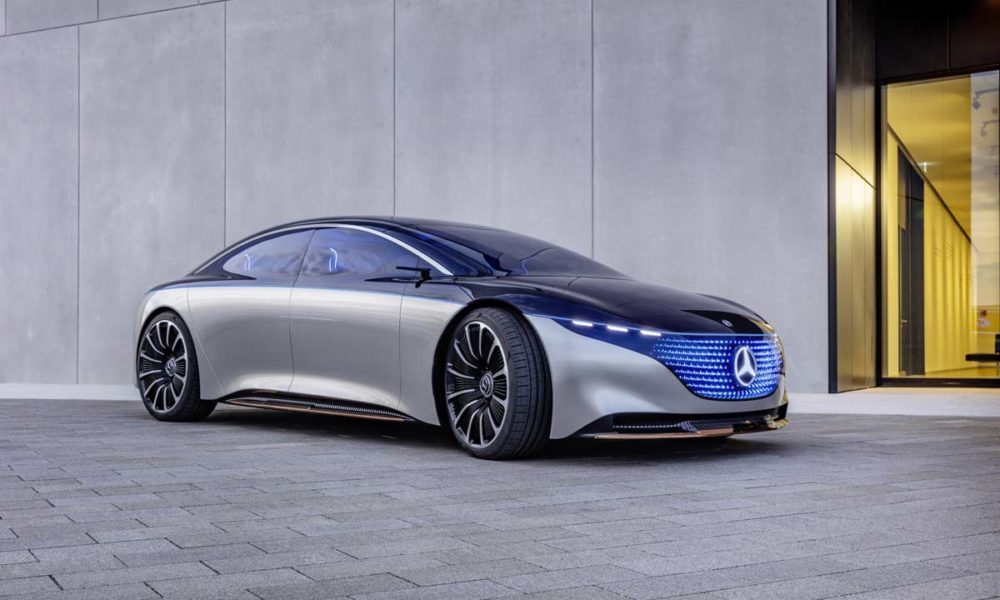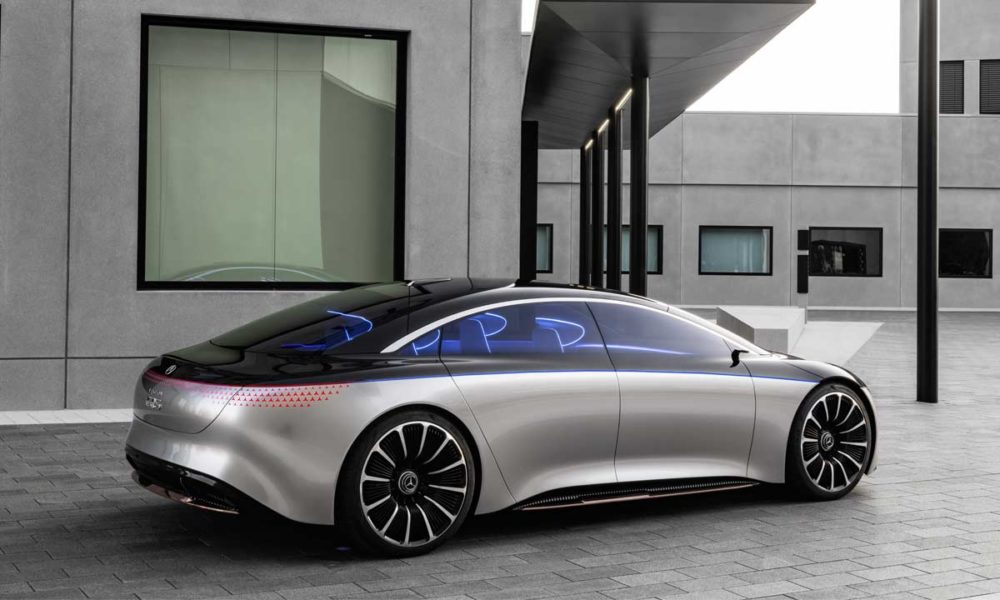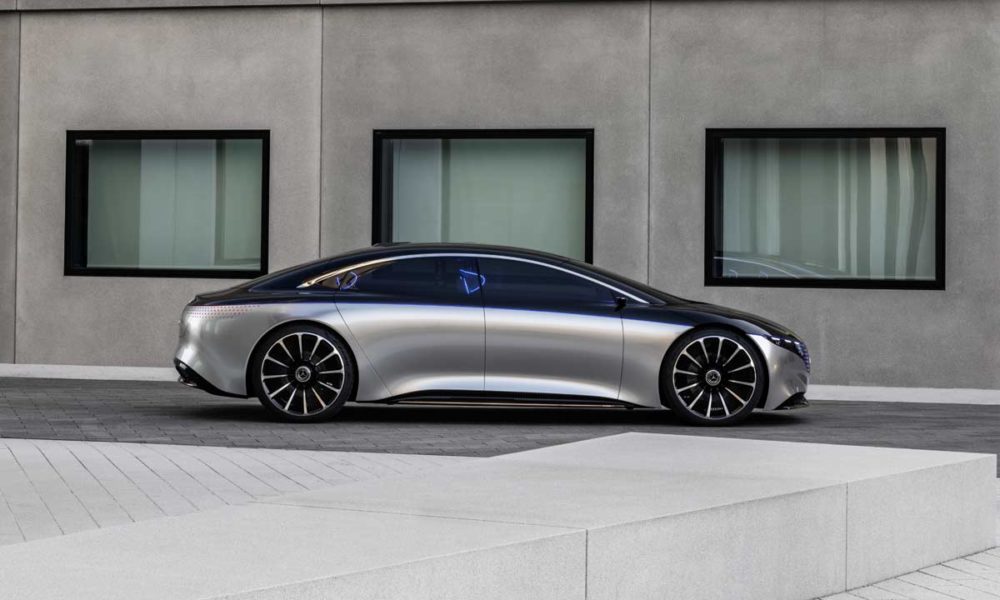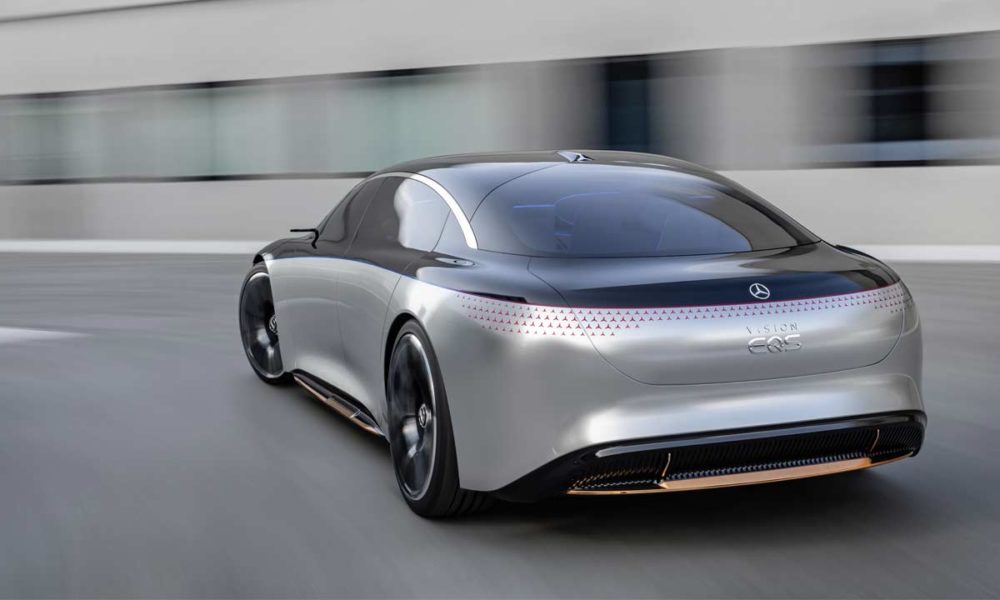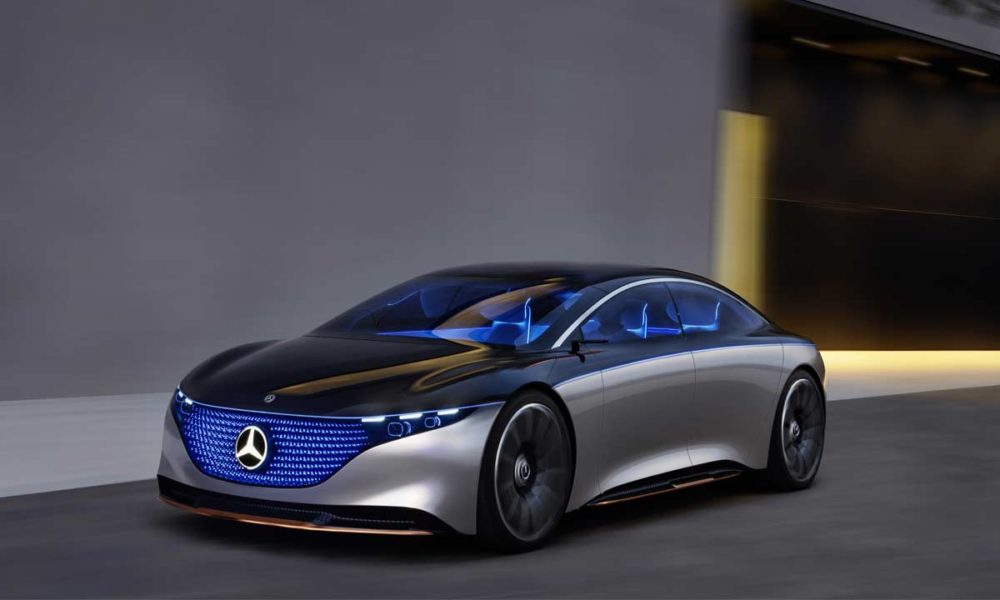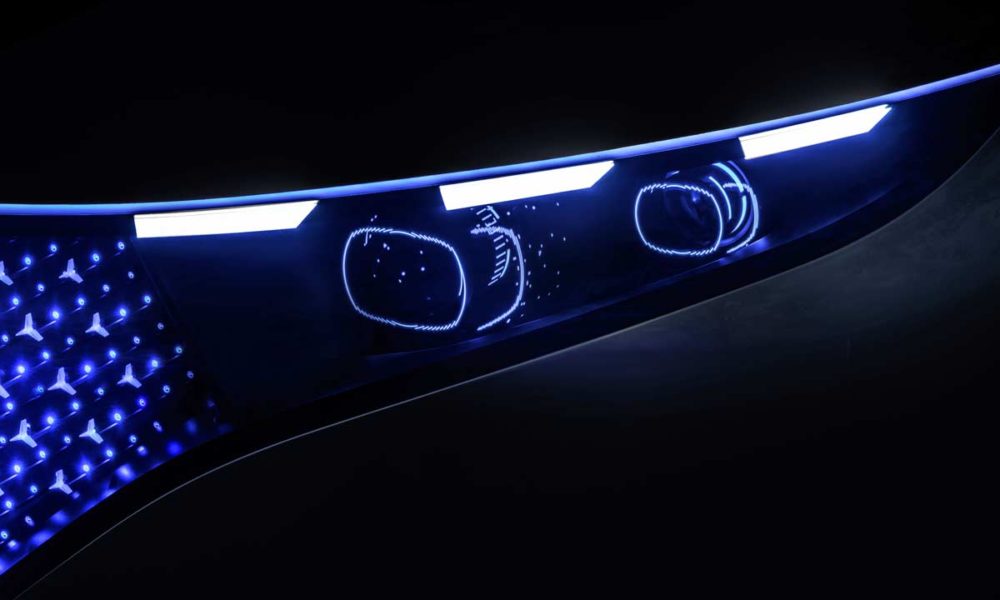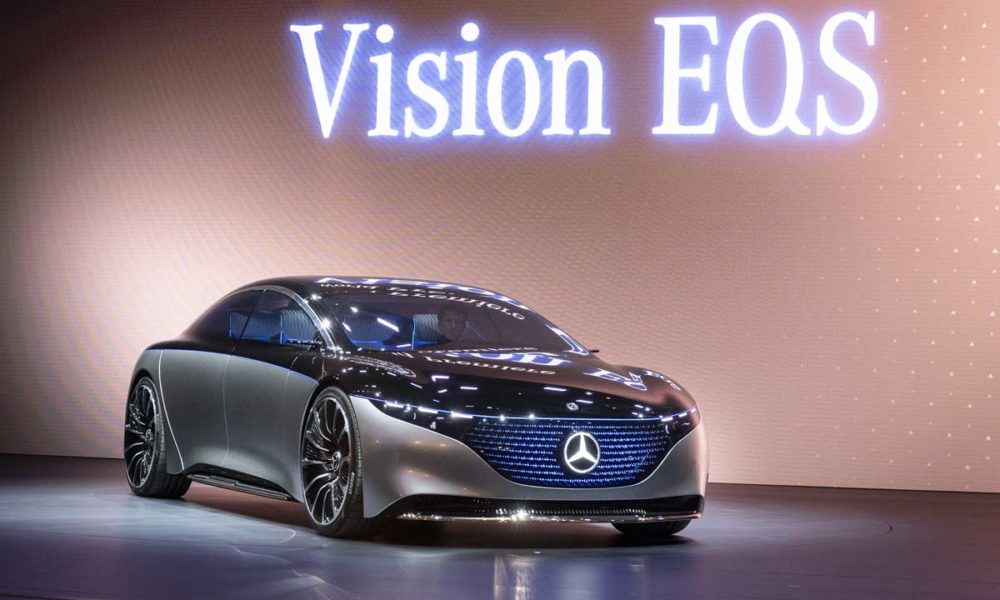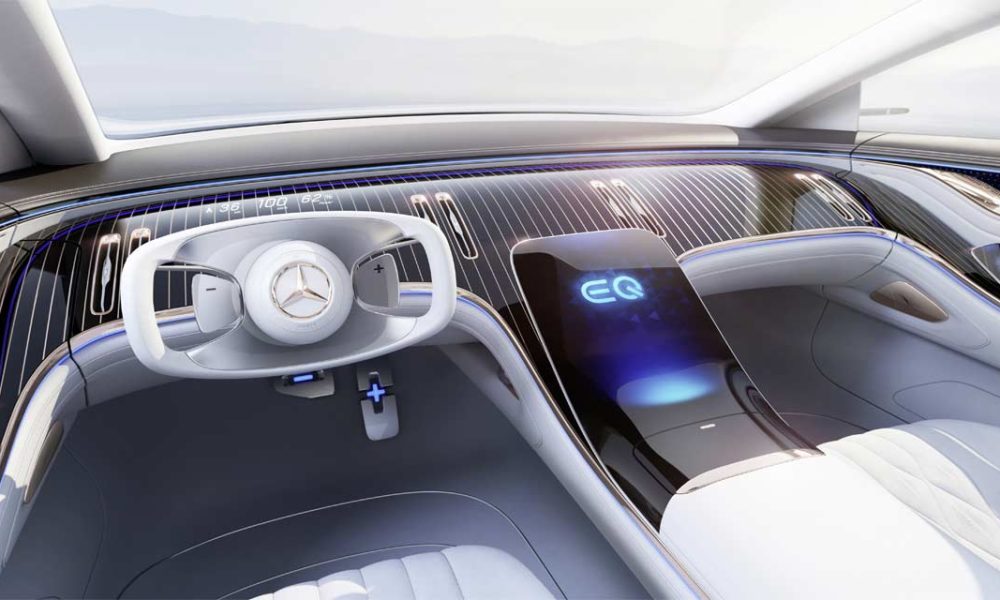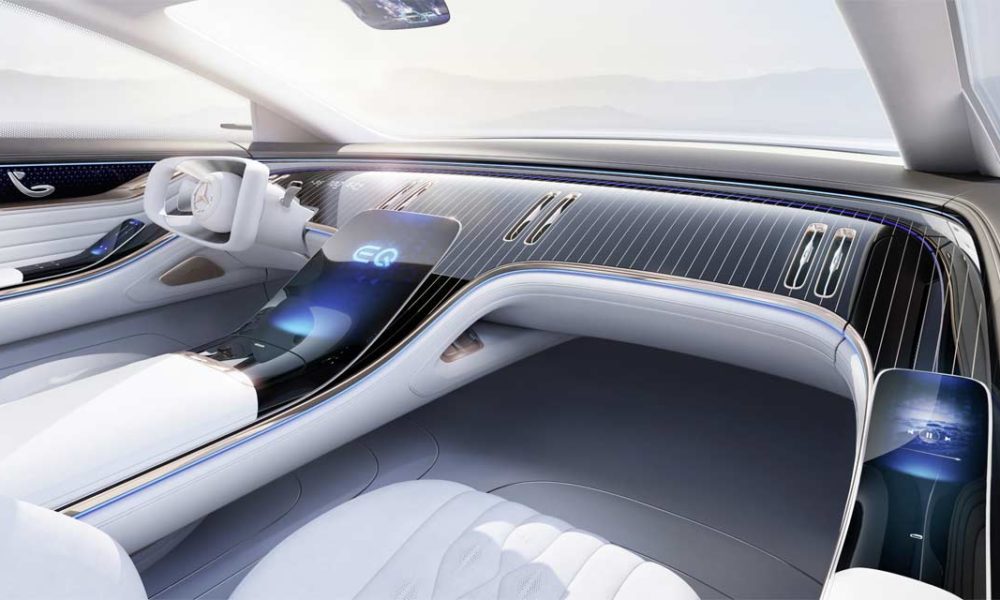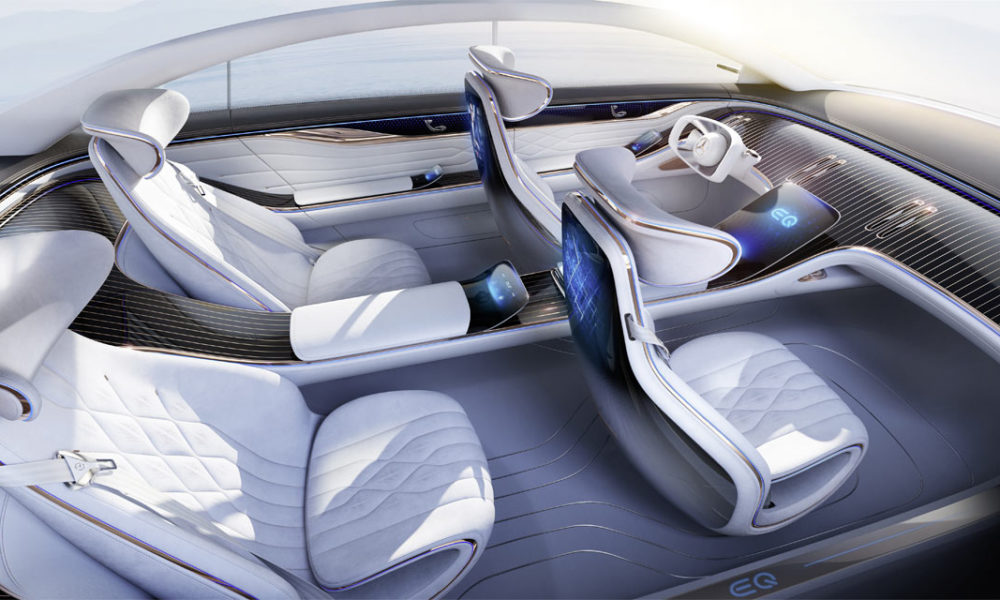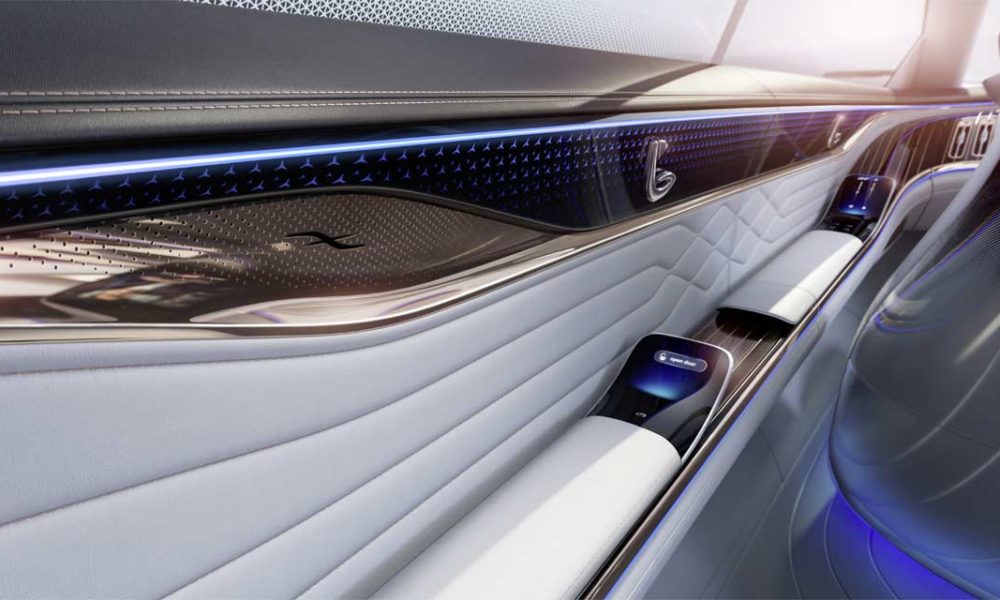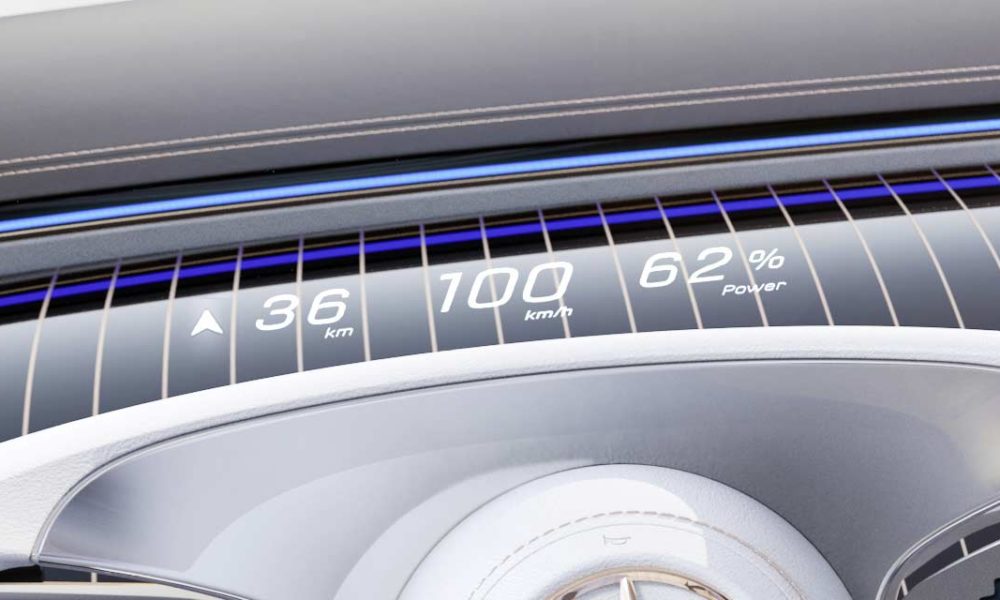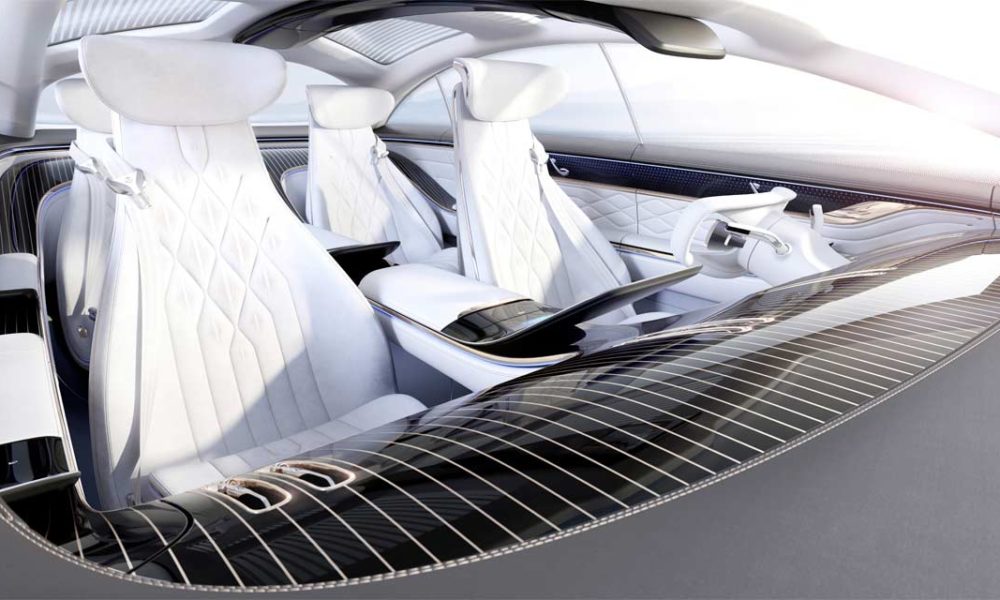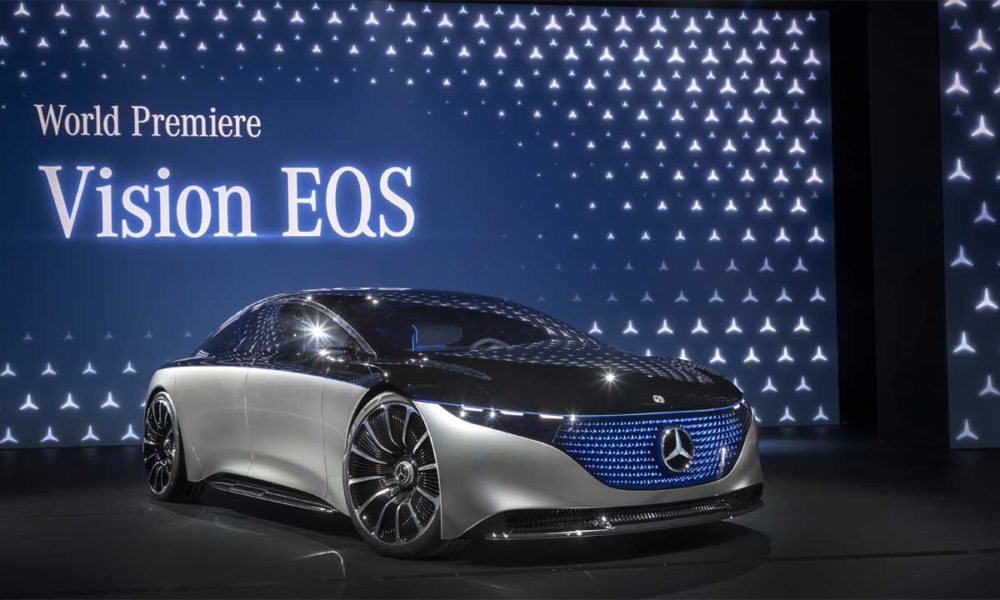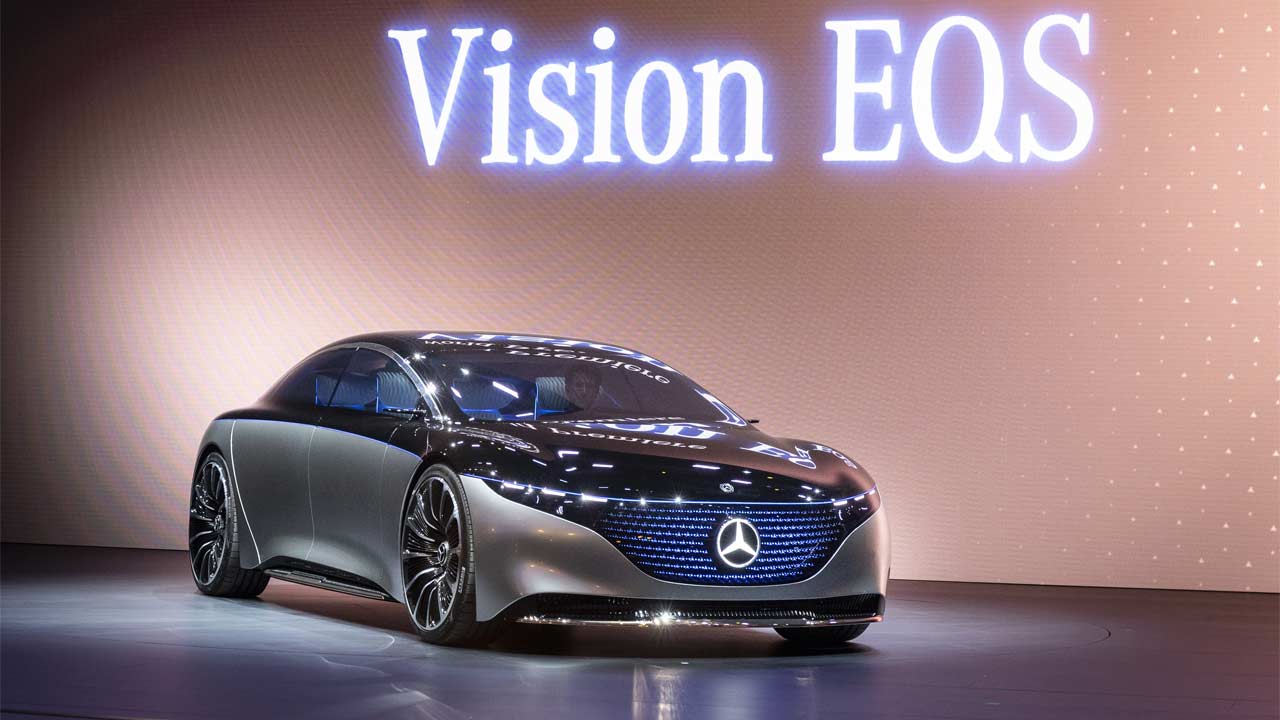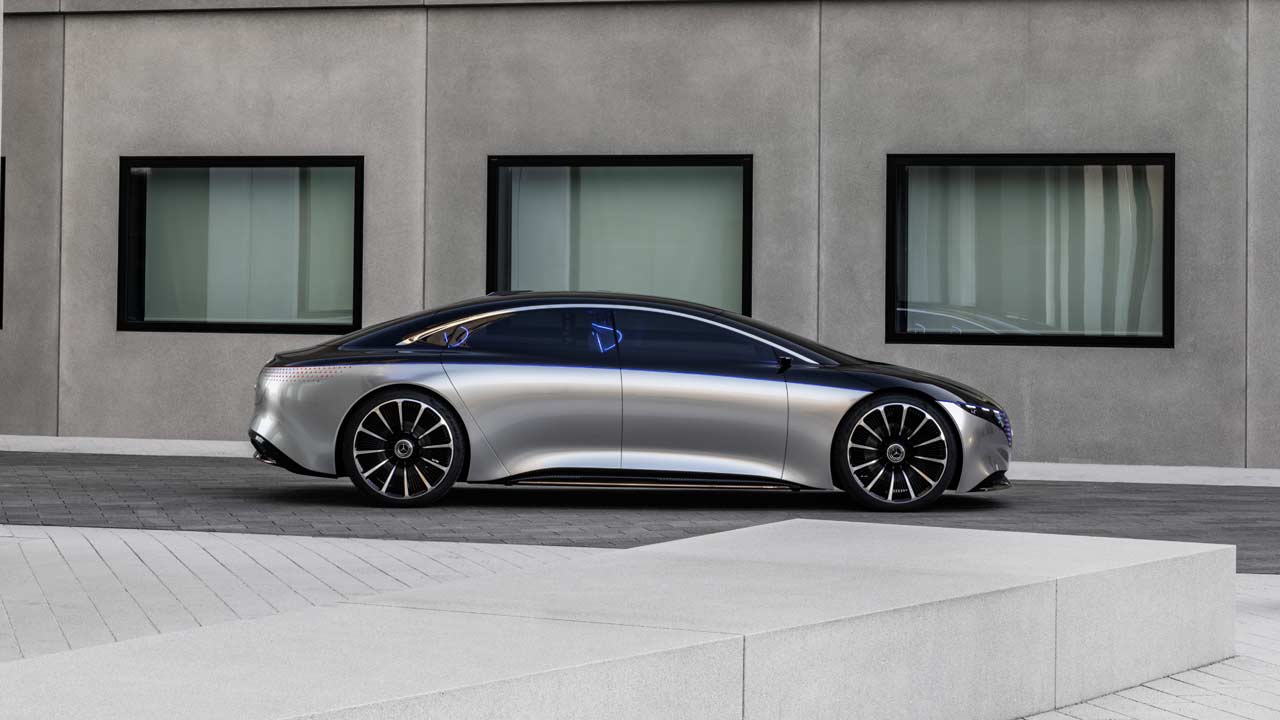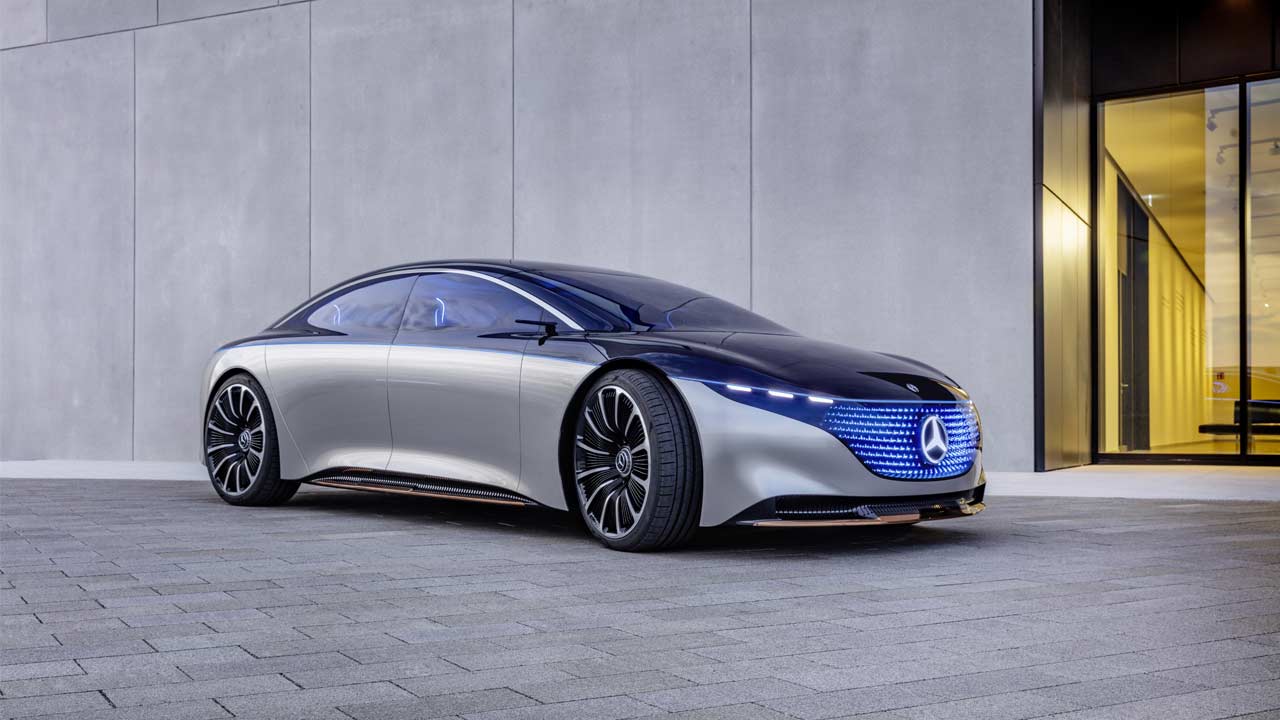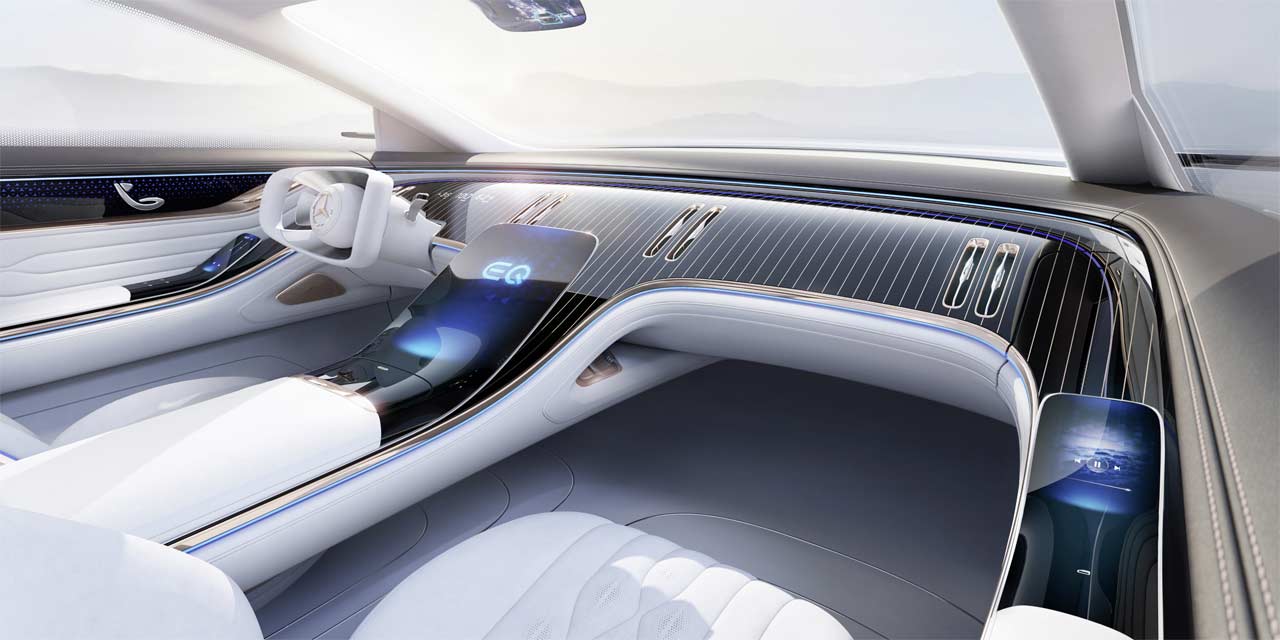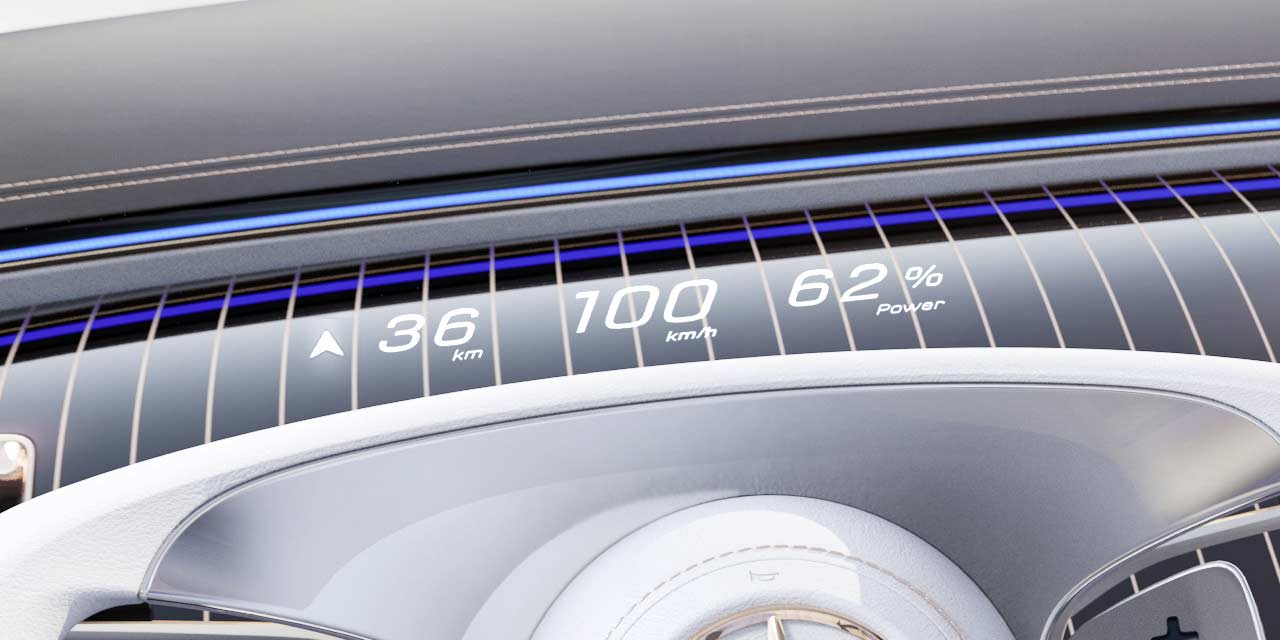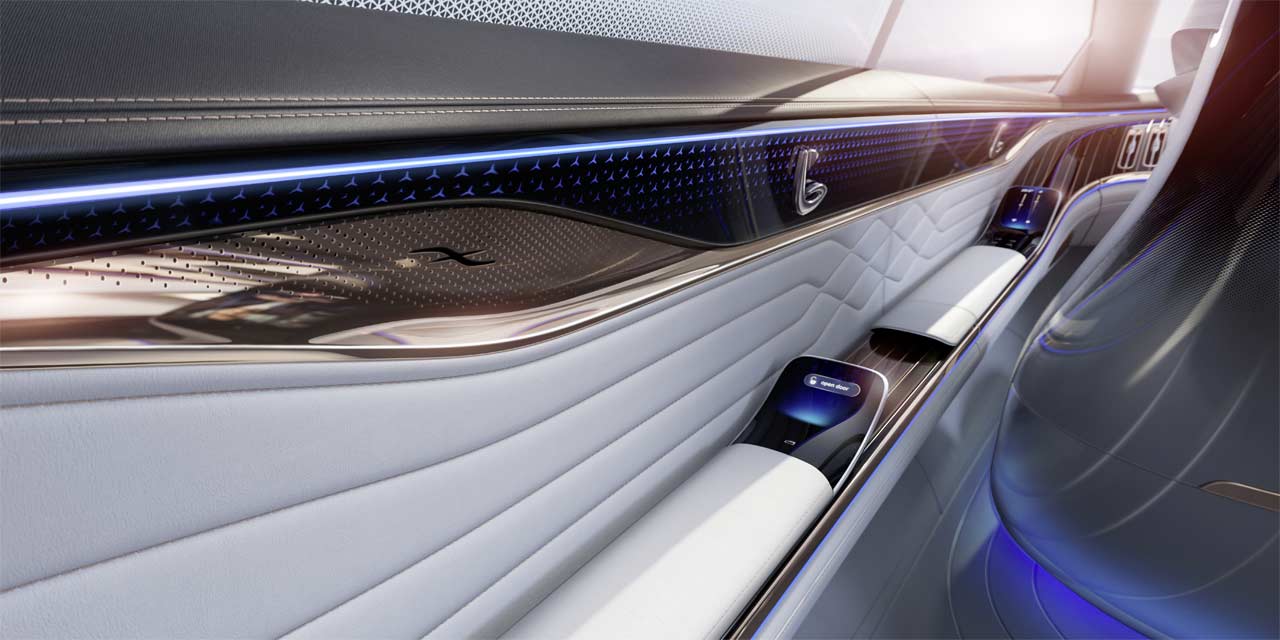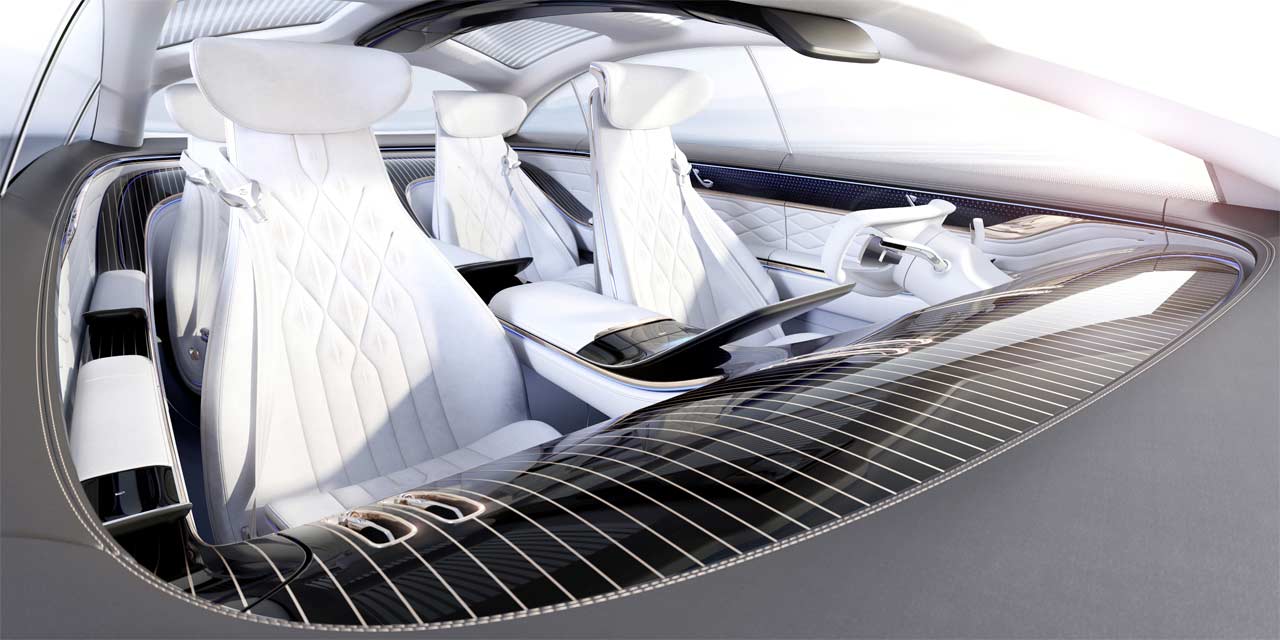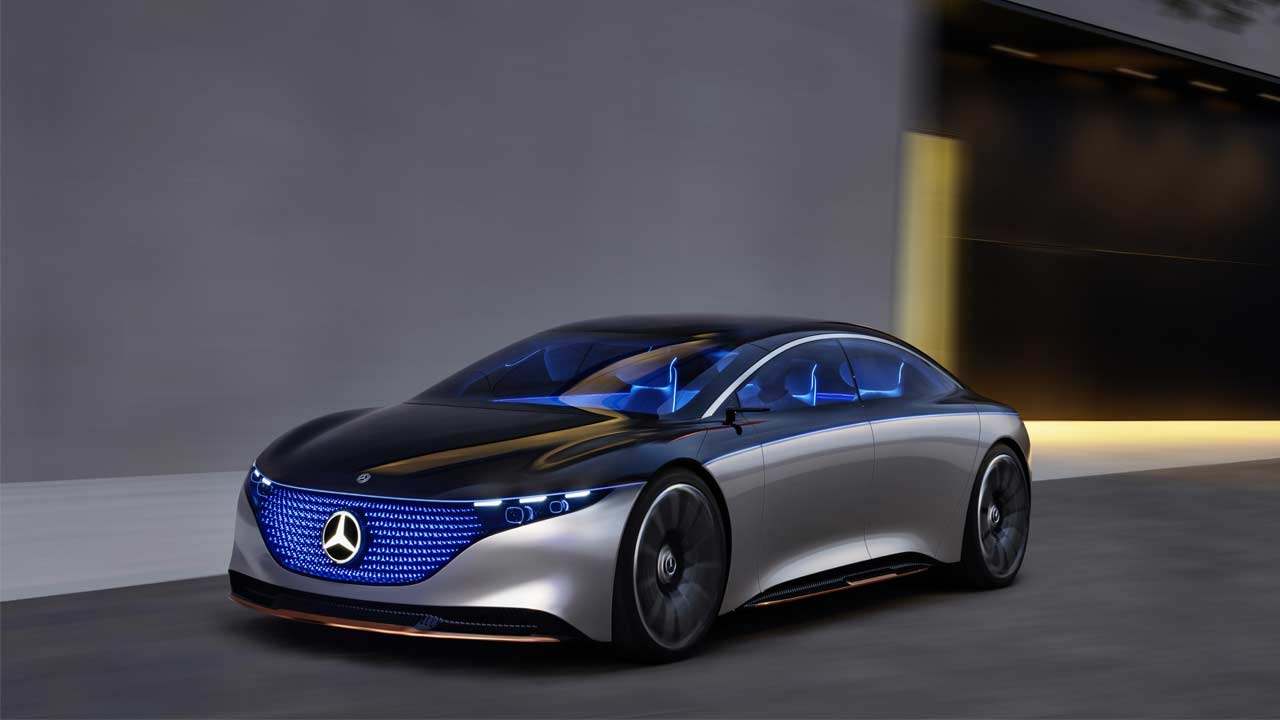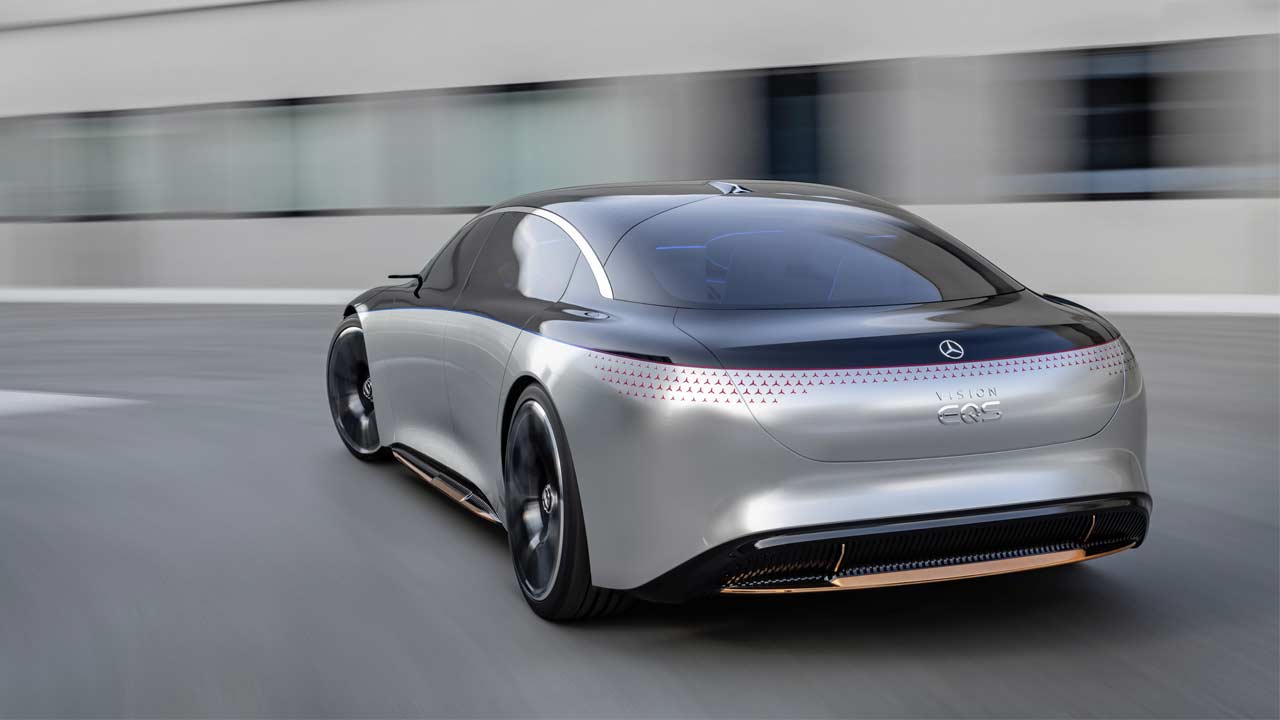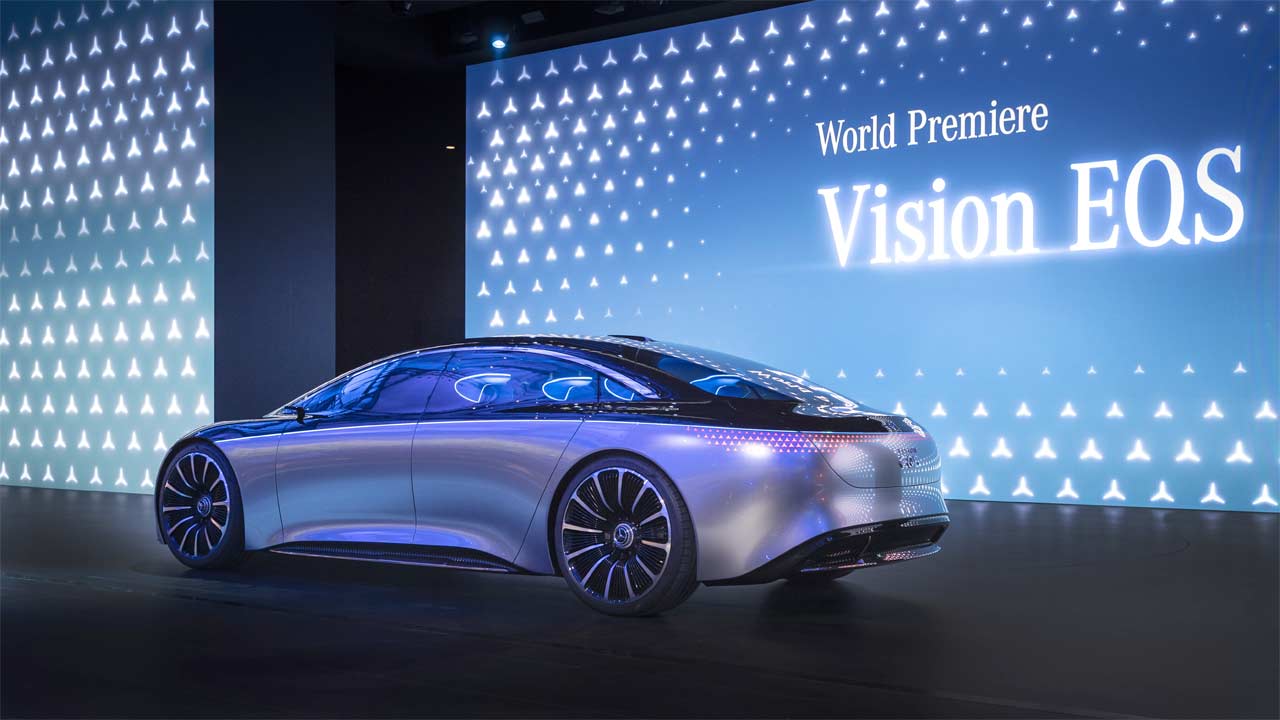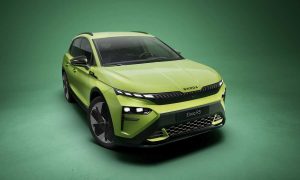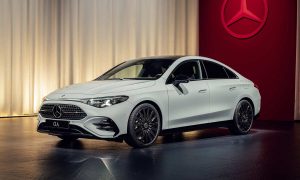While the phrase “the end of ICE is sooner than you think” is true, we all shouldn’t mind a chauffeur-driven limo going fully electric in the future. The Mercedes-Benz Vision EQS tells us that the S-Class is one of those first cars to go fully-electric.
As with the EQC, the design is clean and fluidic, however, the exterior of the EQS is all about those lights. A continuous 360° lightbelt divides the car into two parts, with the top section in gloss black. The black panel grille consists of 188 circuit boards, each of which carries 5 individually actuated LEDs and a single star. There are a total of 940 individual LEDs with which the vehicle communicates with its surroundings.
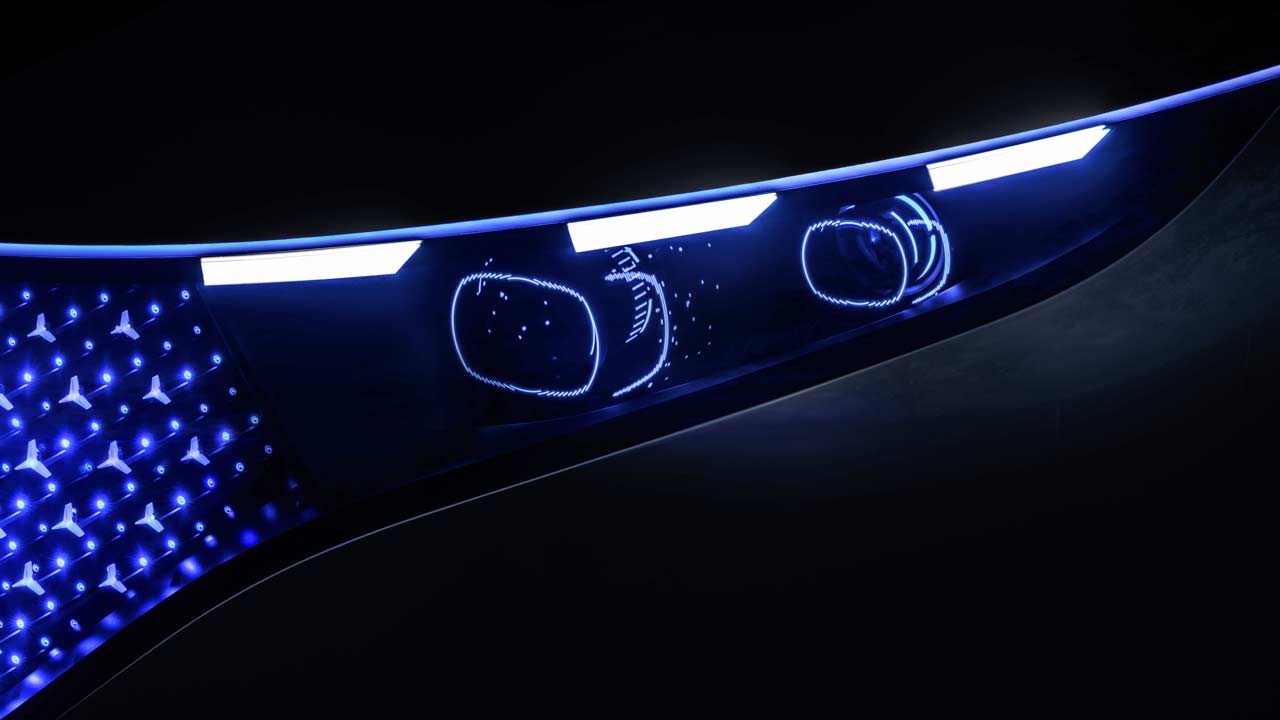
Another highlight is the Digital Light headlamps, each with four holographic lens modules. Once the black panel comes to life, the seemingly free-floating stars and pixels create a holographic effect of floating light modules. These holographic lens modules apparently rotate at well over 2000 rpm. The main module and circuit boards become practically invisible thanks to the high rpm, making the 500 LEDs per headlamp to “float” in space.
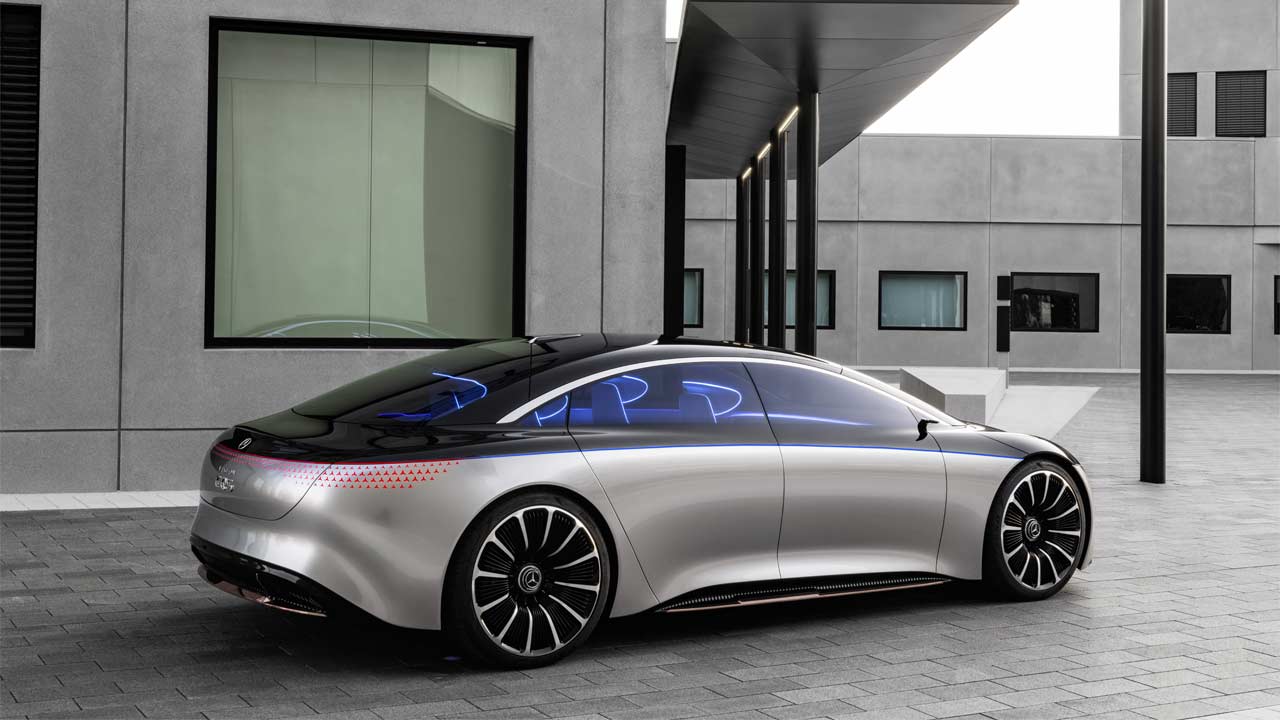
The same starry theme has been carried over to the rear of the vehicle; there are a total of 229 individual LED stars replacing the conventional taillights. The concept rides on 24-inch multi-spoke wheels. As for the body, it’s a mix of steel, aluminium and carbon fibre.
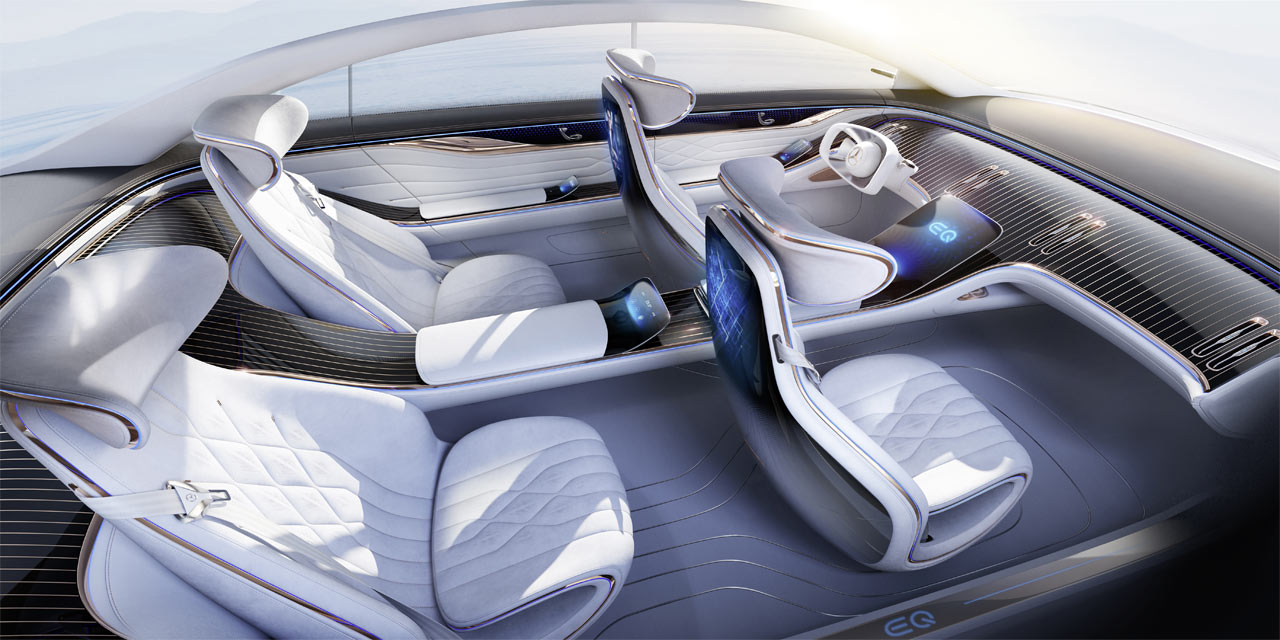
As you might have guessed, the inspiration for the interiors apparently came from the world of luxury yachts. There seems to be no physical buttons whatsoever; even the electric windows are operated via the touch panel on the armrests. Crystal-white Dinamica microfibre on the seats contrasts with rose-gold highlights at the seam ends. As for sustainability, the roof liner contains material made of ocean waste plastic, and the wood trims are from ecologically managed German forests.
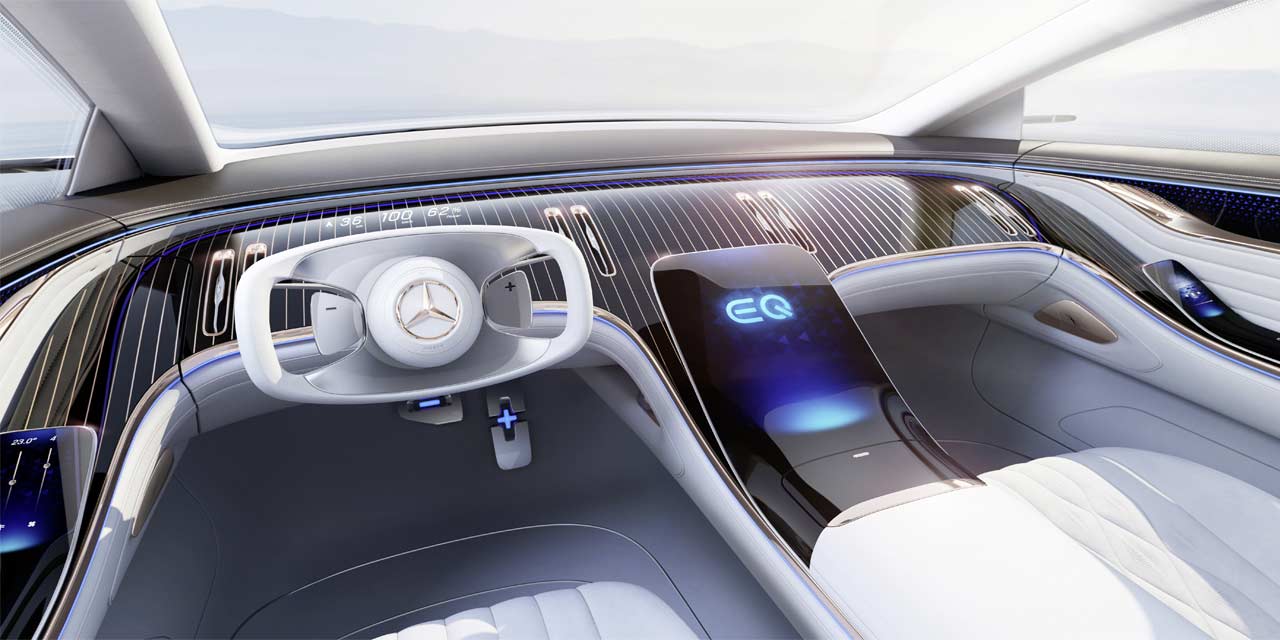
As for the technical bits, the Vision EQS has an electric motor at each axle, developing a system output of 350 kW (476 hp) and a peak torque of 760 Nm. The 100 kWh lithium-ion battery is claimed to get a range of up to 700 km (WLTP). Mercedes expects the EQS to accelerate from 0 – 100 km/h in less than 4.5 seconds.
With 350 kW DC charging, the Vision EQS is claimed to recharge its battery to 80 percent in less than 20 minutes. While the cells come from a supplier, the battery pack is made by Daimler subsidiary Accumotive. The battery cells are apparently produced using power from renewable sources.
The Vision EQS can support the driver with Level 3 automated driving on longer motorway journeys. Thanks to the modular sensor systems, the level of autonomy can be upgraded to fully-automated driving in the future.

Leave a Reply
Note: Comments that are unrelated to the post above get automatically filtered into the trash bin.
